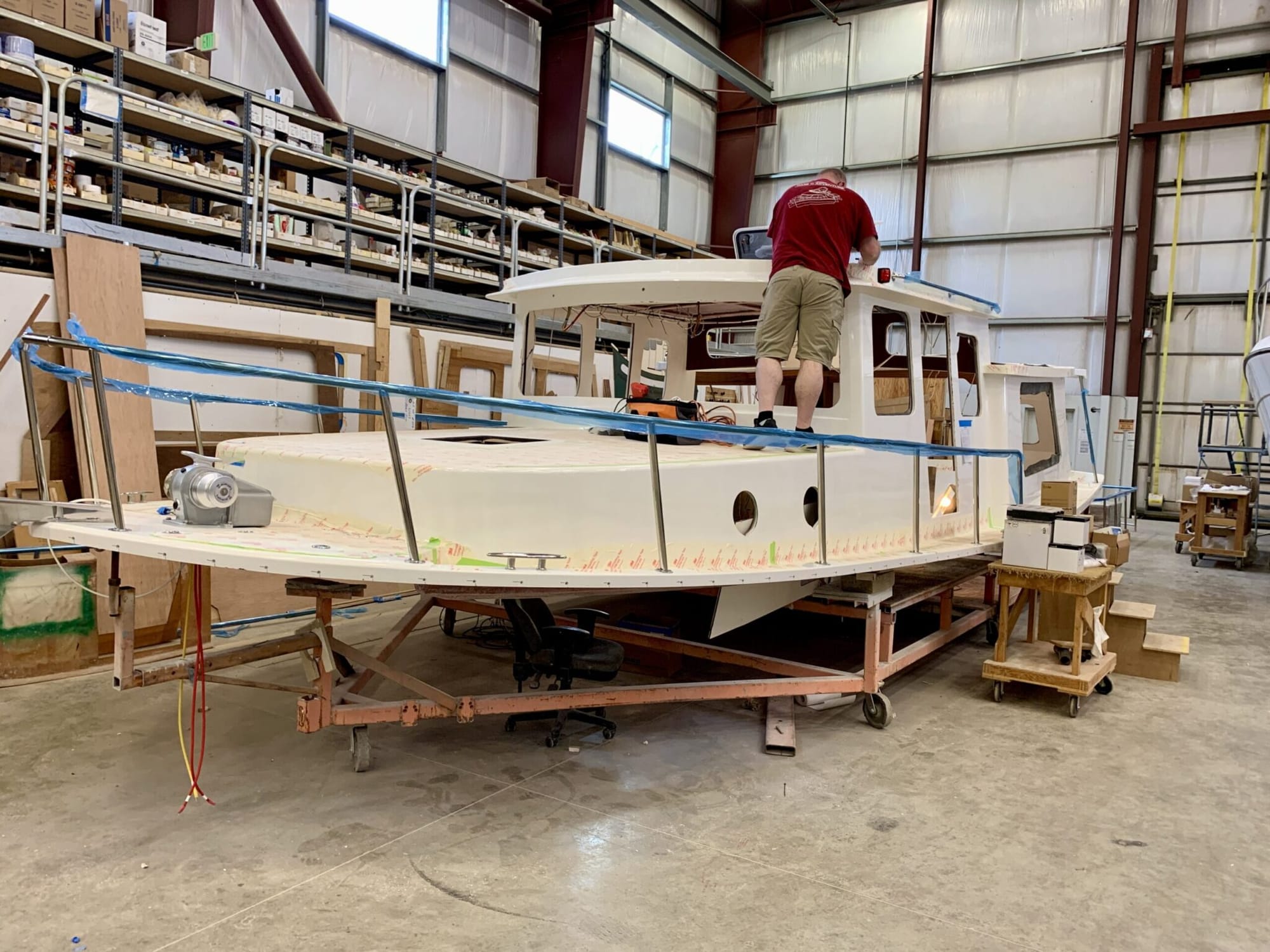
“I love it when a plan comes together” John “Hannibal” Smith, leader of the A-team I agree completely. We were frankly amazed to see how much progress had been made since our last visit to the Nordic Tugs factory about a month ago. It shows what they can do when

“I love it when a plan comes together”
John “Hannibal” Smith, leader of the A-team
I agree completely.
We were frankly amazed to see how much progress had been made since our last visit to the Nordic Tugs factory about a month ago. It shows what they can do when parts and labor are available. The best news: delivery is looking more like early August than late September!
Let’s begin in the Carpentry shop, empty because everyone was at lunch. As a former junior high wood shop student, I am in awe of what these folks can do. Everyone who ever tried to build a foot stool or bedside table knows that it ain’t easy. Imagine doing work of this quality in a boat, where there are no right angles!
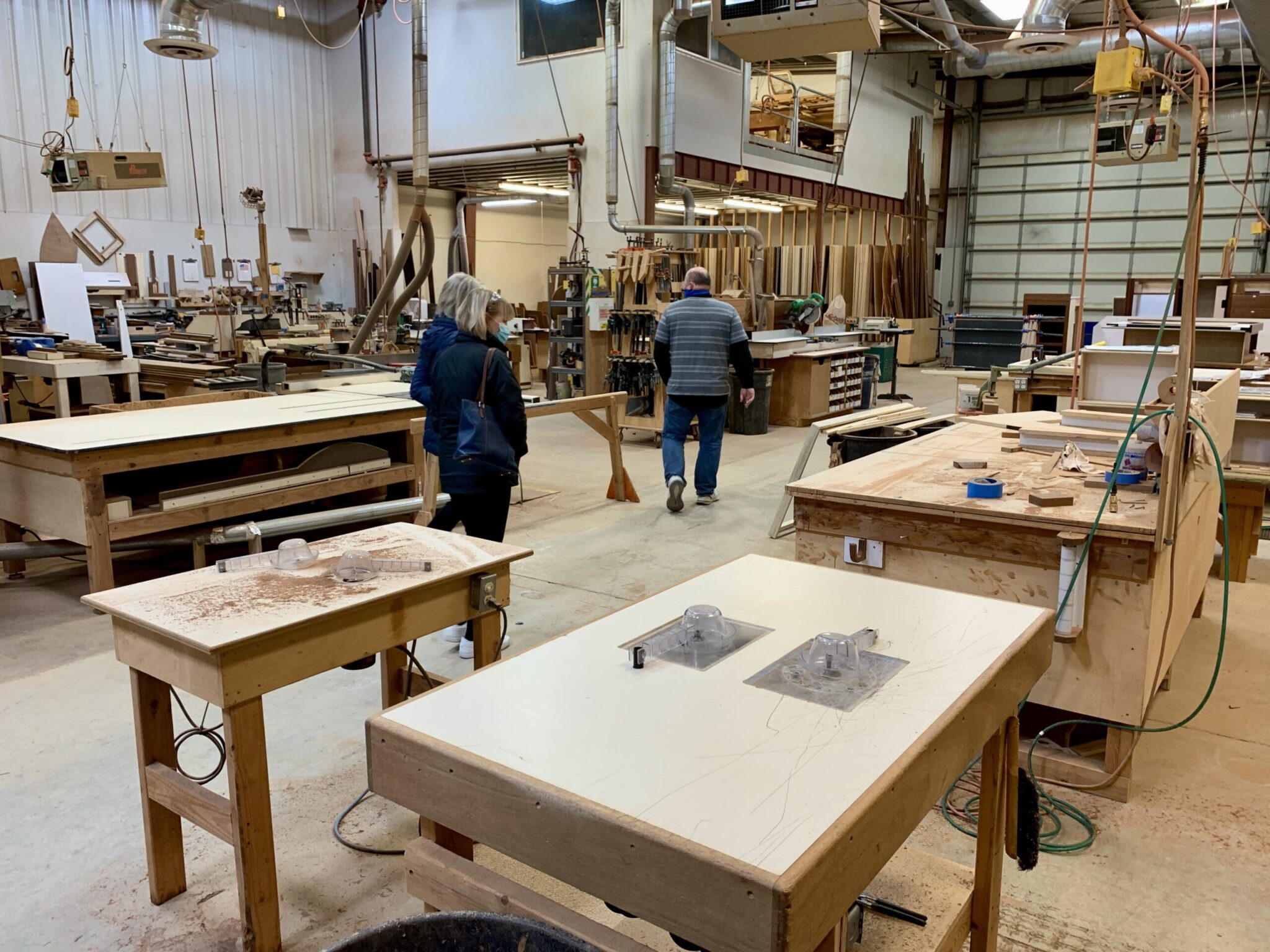
Nordic’s Dave Allen shows Mary Anne and our friends Mike and Susan some of Étude’s interior components.

New to the line since Impromptu was built in 2010, soft close drawers.
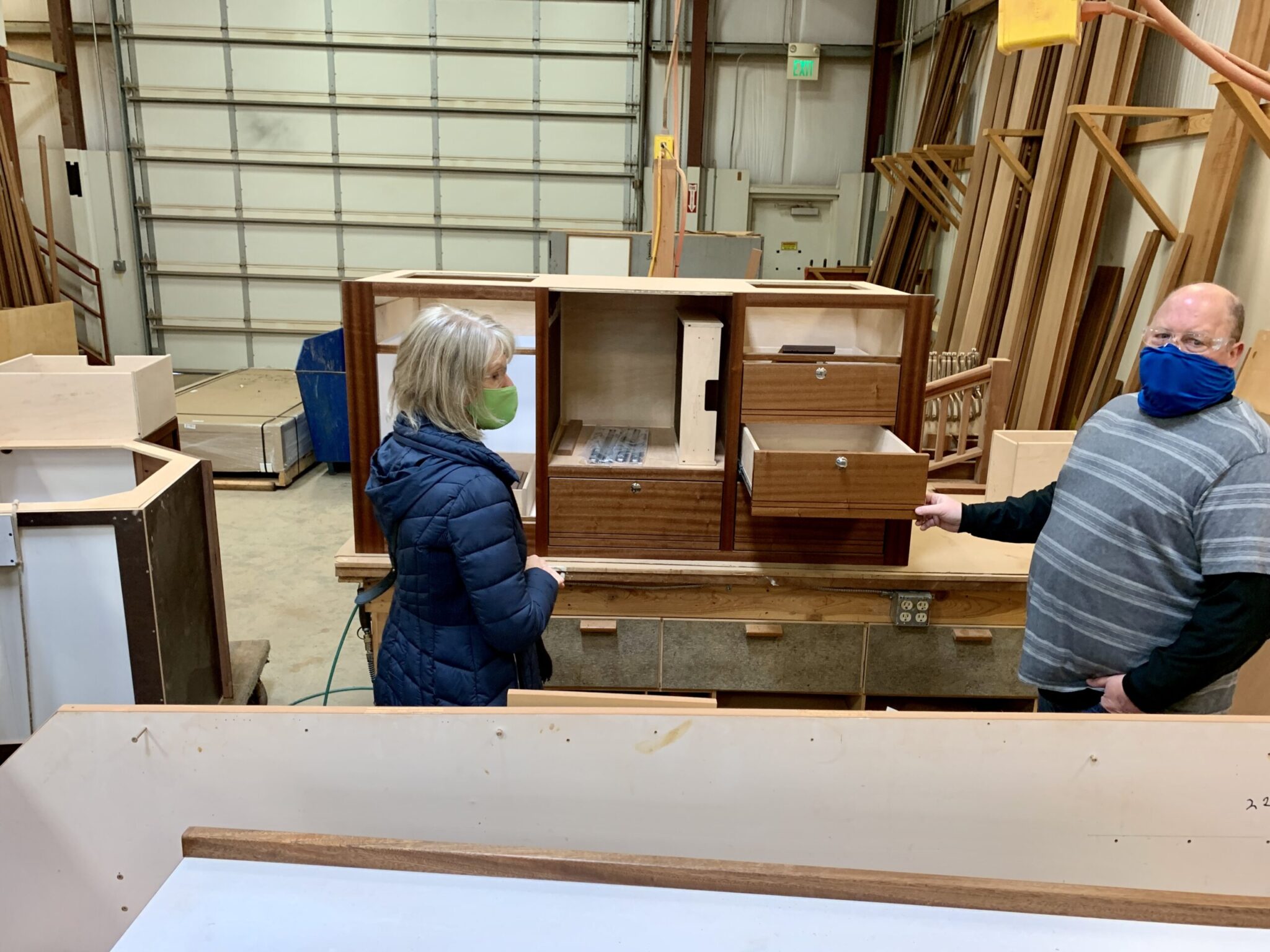
This awkward photo is looking down into the master stateroom. The mattress will eventually sit on a platform on top the the wooden “box” that holds four drawers. The components and wiring are the bow thruster. To review: that’s a small propeller mounted in the forward end of the keel that can push the bow to port or starboard during docking maneuvers.
Looking aft, we can peek into the guest berth. Across from it is head and shower stall.
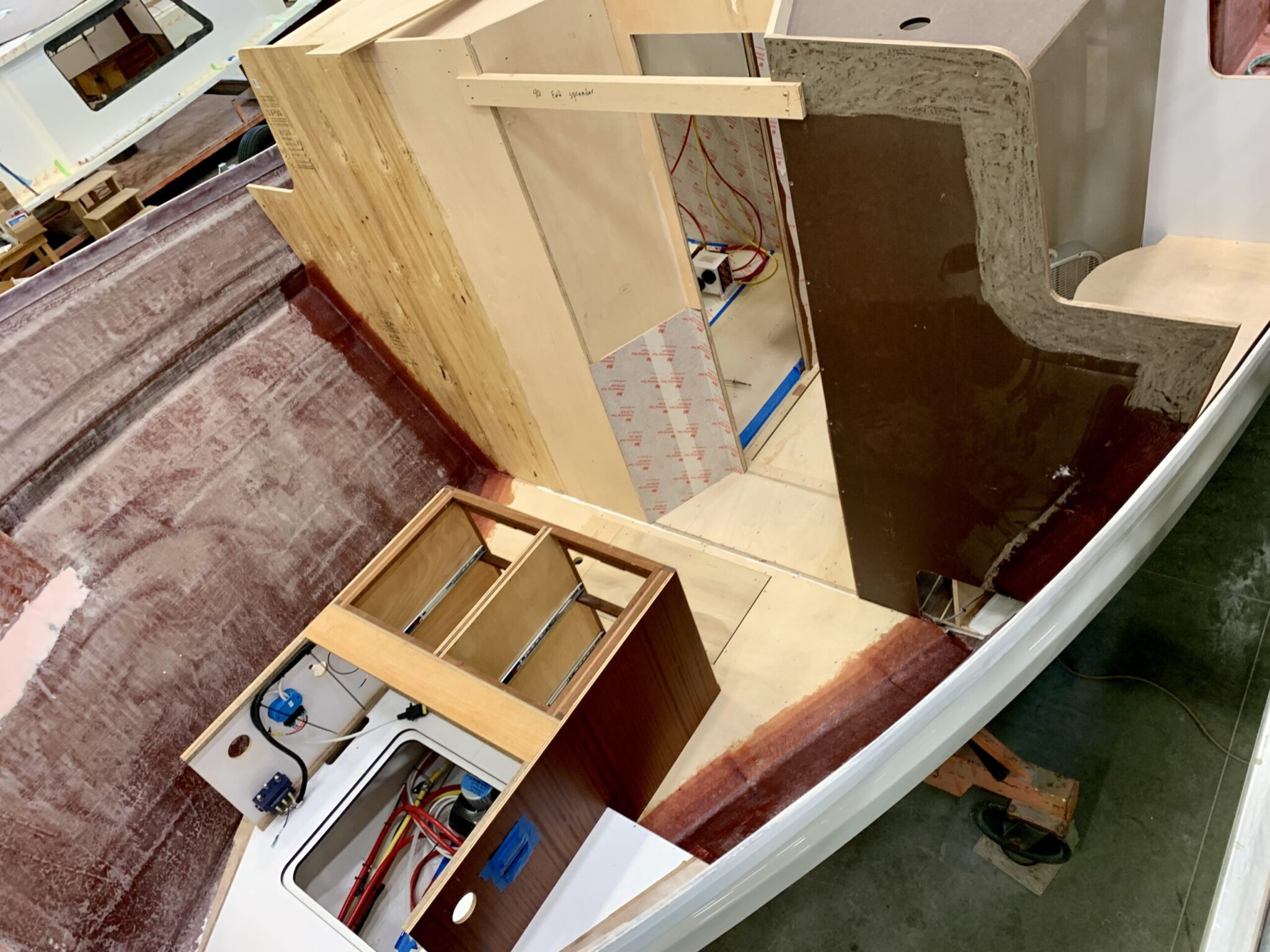
Notice the darker red material. Unlike some manufacturers, Nordic bonds all the interior wood to the hull to avoid any possibility of movement.
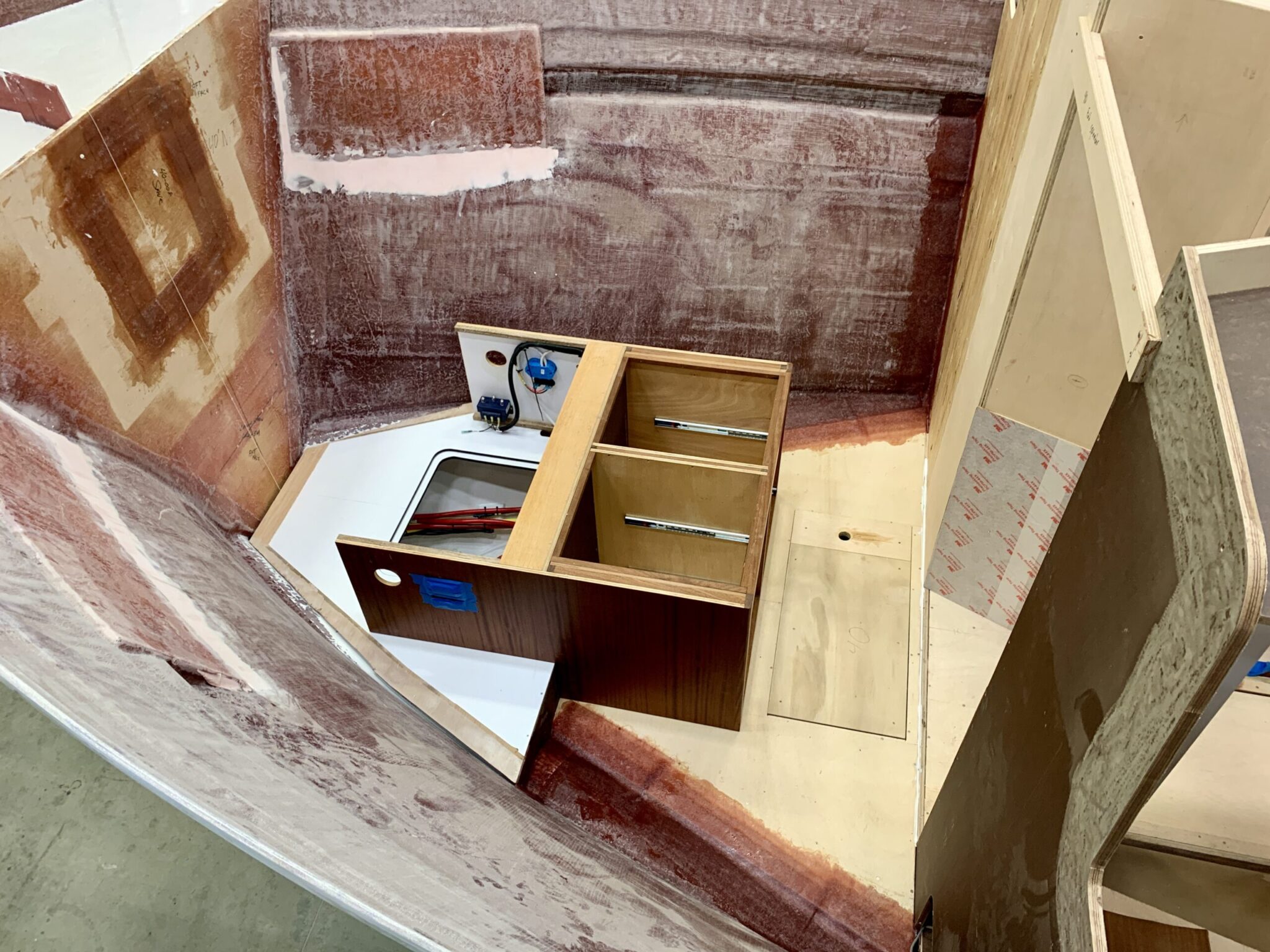
This is the Wiring shop. Nordic builds a custom wiring harness for each boat depending on its model and options. Every wire is labeled on both ends. This is a big deal once the boat is in the water and someone is trying to fix a problem or replace a faulty component.
Funny story: as you can imagine the lettering on these labels is teeny. In the early days, a worker wrote each one by hand. I get writer’s cramp just thinking about it!

This is Études sole. That is to say, “floor” for the saloon (“salon”). The lower far side is where the benches, barrel chair and table will be. The near side and part of the aft end will be the galley. The cutout next to the stairs is where the fridge/freezer goes. Upstairs is the pilothouse.
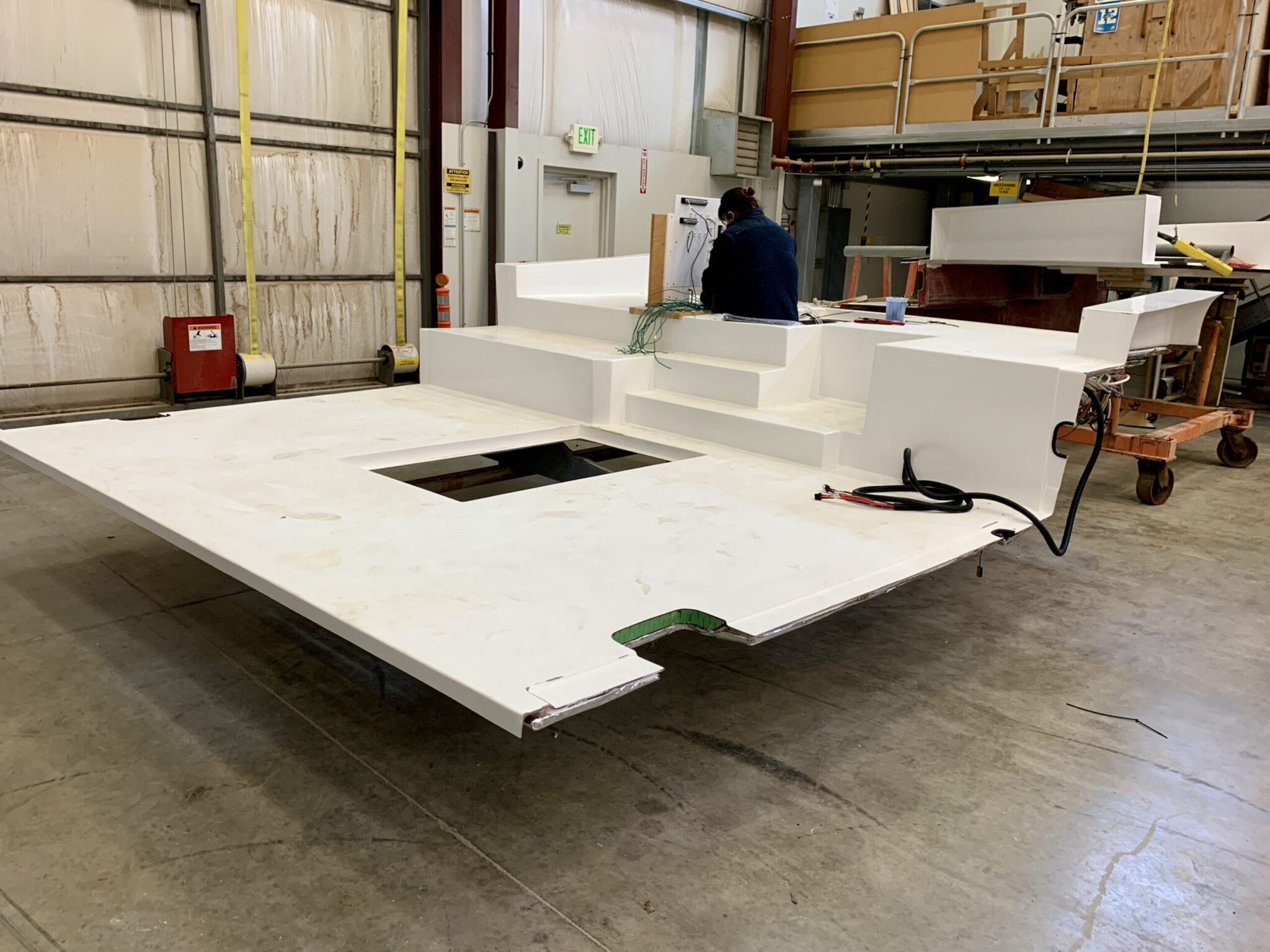
This should give you a sense of the sheer volume of wiring involved in building a modern power vessel. The nice lady is wiring the AC panel. Boats have two electrical systems (or more). This one controls the flow of 120 volt AC power.
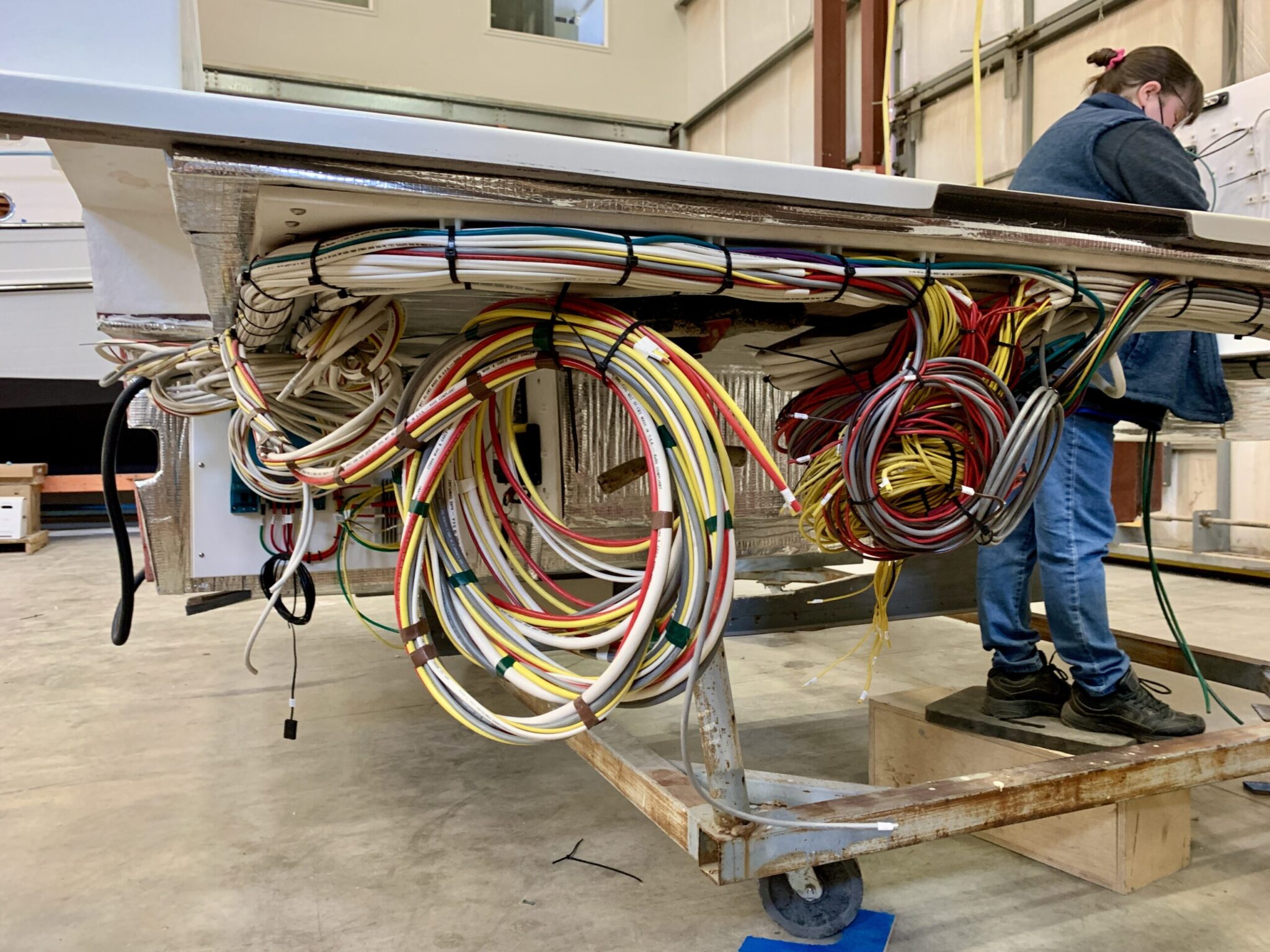
This is the back of the DC panel. These breakers control everything aboard that runs on 12 volt DC power. Notice the label on each wire.
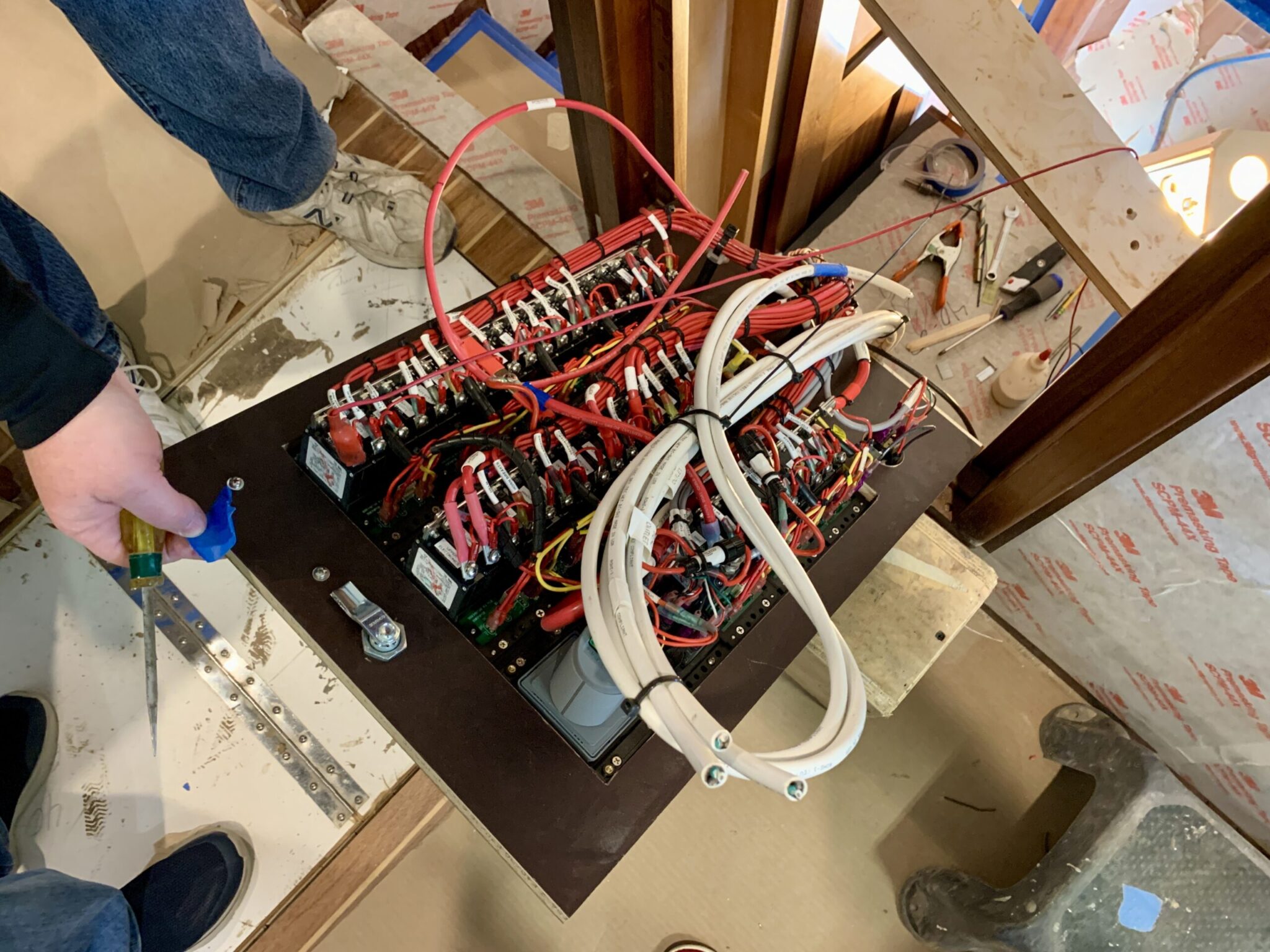
This view will be hard to see once Étude is complete. We are looking at the back side of the DC panel with its door closed. Beside it is a fraction of the wiring that will eventually lead to the helm.
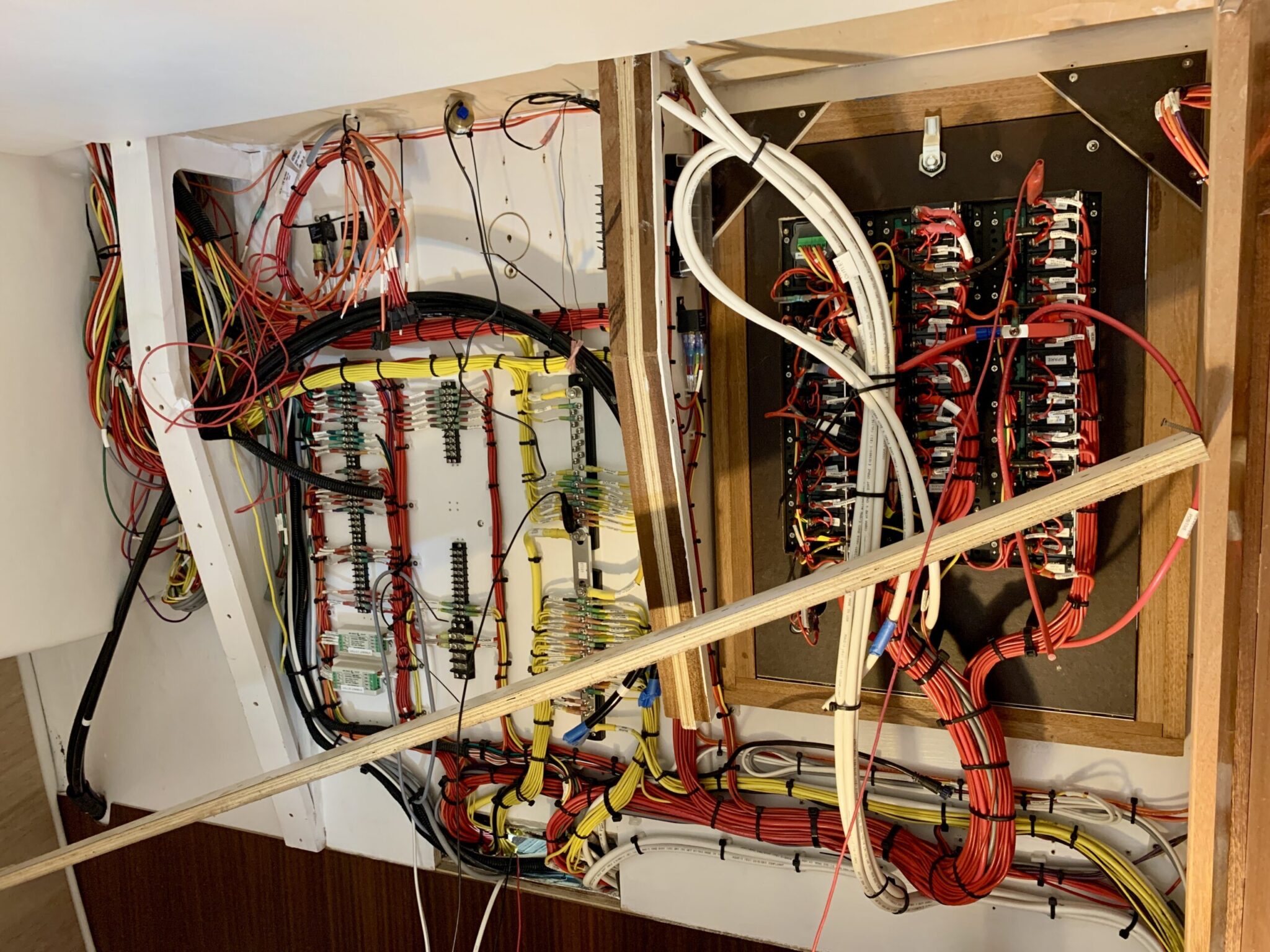
Some of Étude’s saloon/galley components are in place, along with ceiling panels and wiring for lights. The wooden box on the ceiling will hold a fold-down TV.
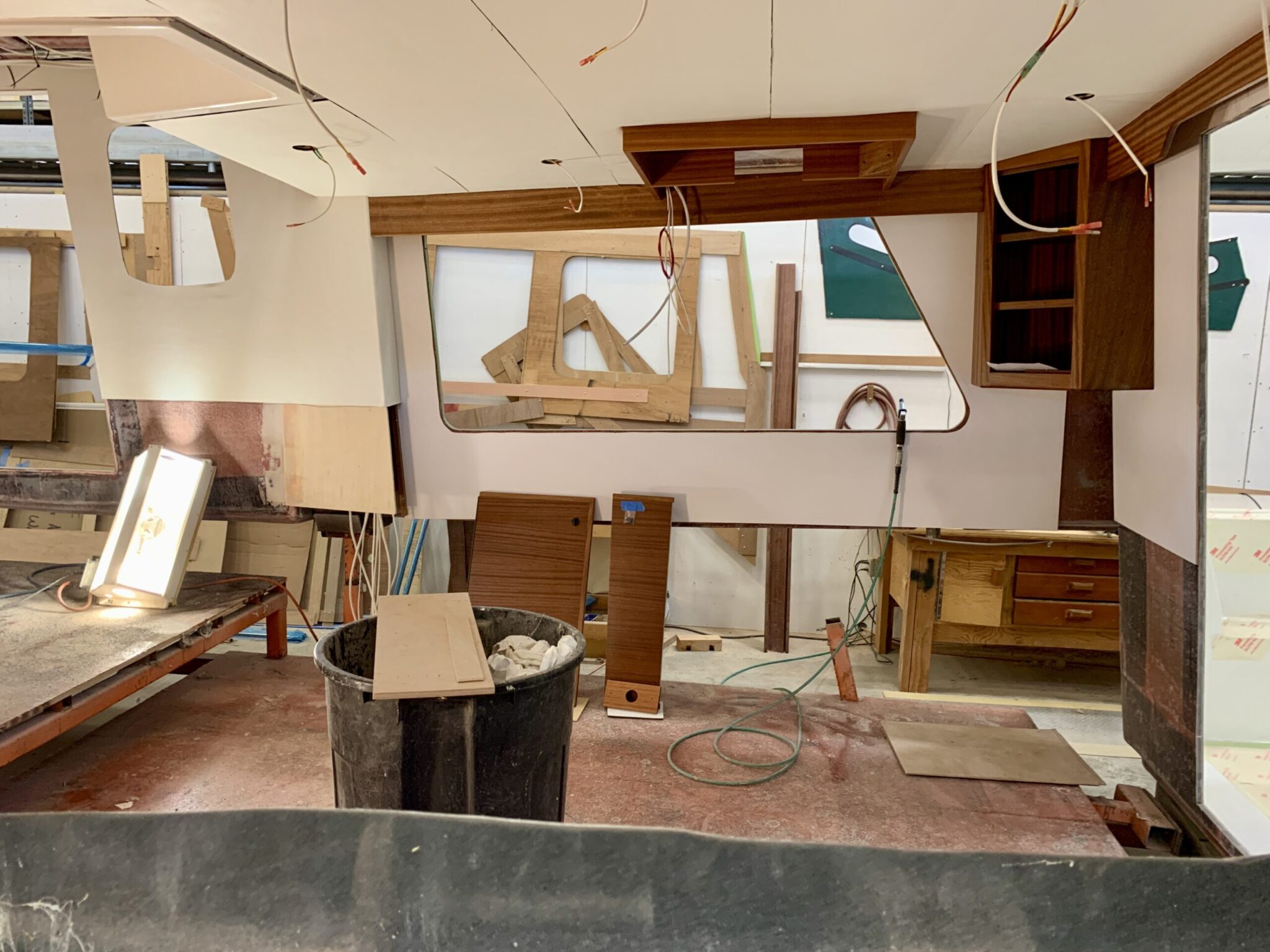
This is the galley of 40-007, the boat ahead of us in production. The sink is in the corner with storage on either side. The cutout by the electric drill will hold a three burner propane cooktop with oven below.
Dave Allen suggested that if we had acted earlier and bought 007, we could have named her Fiona Bond.
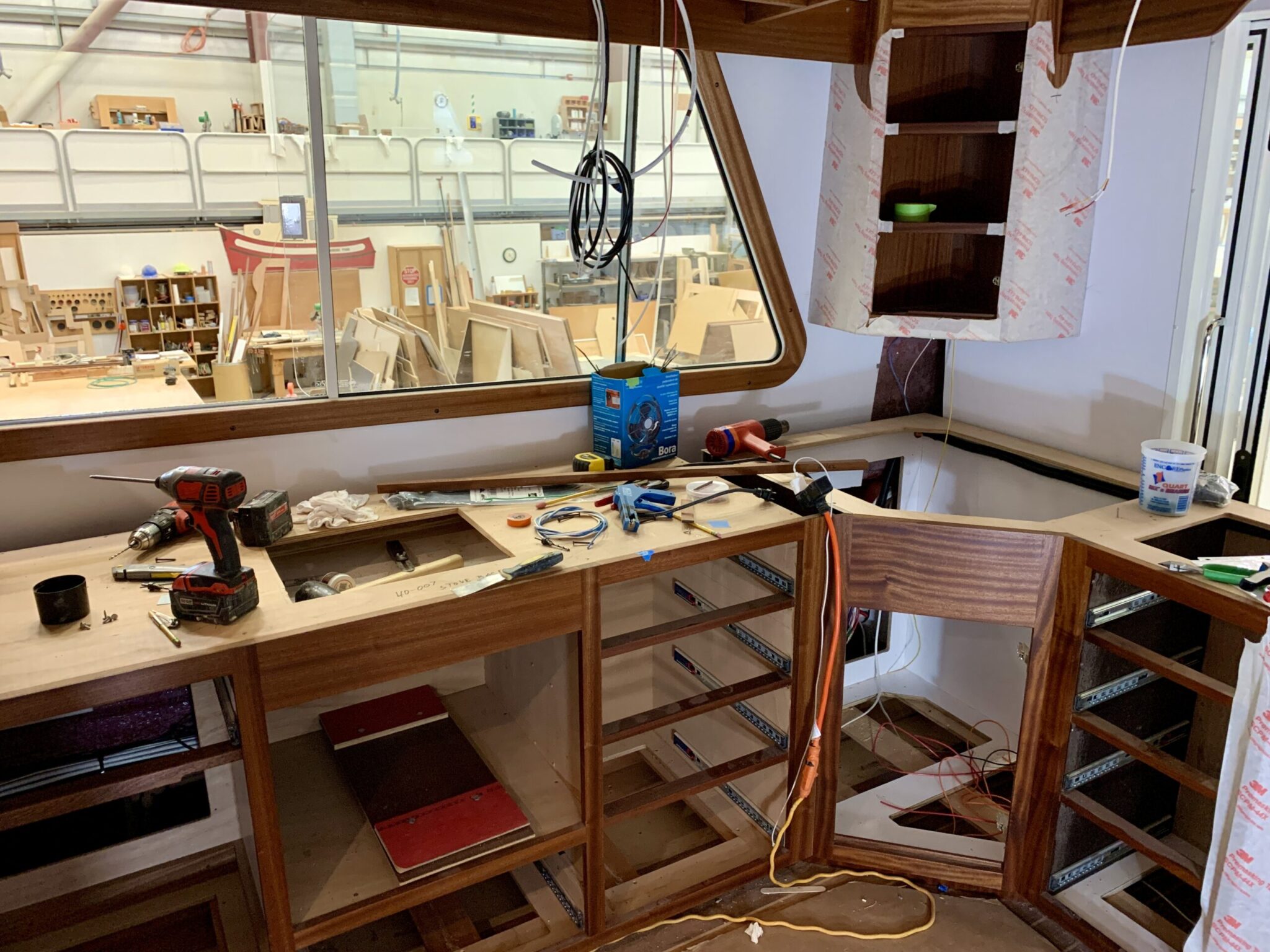
Remember “the Module”? I mentioned it in my last post? It’s the major internal compartments (berths and head) preassembled and then dropped into place at the forward end of the hull. The dark red resin material that we saw earlier holds it in place.
The white box at the bottom of this photo is the central control unit for the water maker. It is sitting in the lazarette, which you may remember is a storage compartment at the aft end of the boat underneath the cockpit. The water maker consists of several components, all of which will live in the lazarette.
The grey cylinder to starboard of the water maker is the motor for the stern thruster. Same idea as the bow thruster, but it pushes the aft end of the boat back-and-forth.
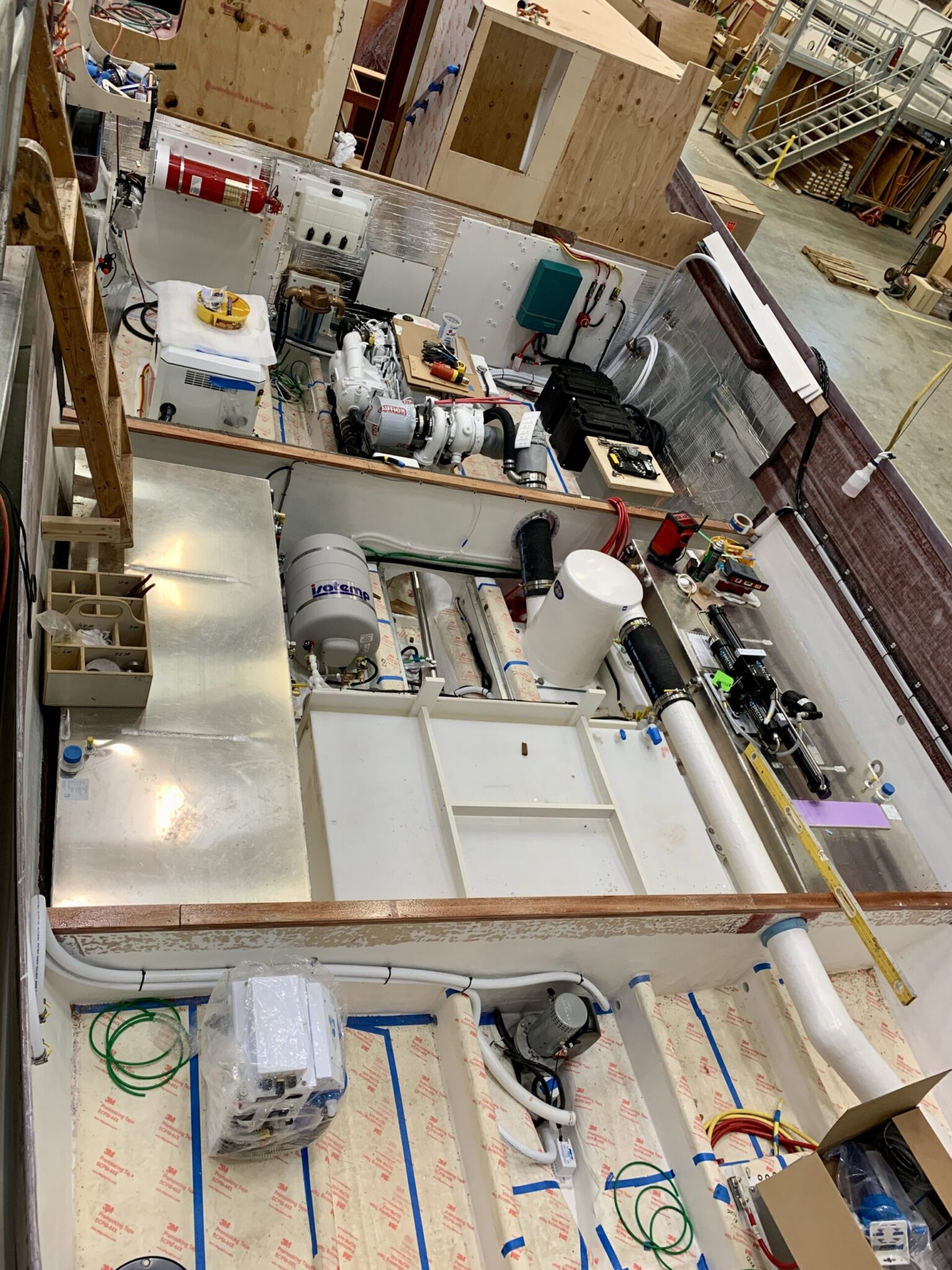
The pilothouse will be just aft of the Module. In the photo below are, port to starboard, the Genset (generator) and fire suppression system. The white box on the bulkhead is a simple two-way fluid pump that can suck old nasty oil from the main engine, the genset, and the transmission and pump nice new oil in.
So, what about this “Genset”? When you’re at a dock, the world’s your oyster, power-wise, because you can plug into AC power. Why do you care? Because some things, like recharging the gaggle of batteries required to run your boat are charged via AC. Likewise, the microwave, curling iron, TV and other nautical necessities run on “house current”.
But what if you’ve bobbing happily at anchor miles from the nearest dock? That’s where the genset comes in. It’s a small Diesel engine that runs a generator that, through the magic of electronics, outputs both 120 volt AC and 12 volt DC. Just the thing for making popcorn while you watch TV.
NOTE: We rarely make popcorn and never watch TV when we could be listening to birds and watching bears forage.
But no matter, having your own power station aboard is a good thing.
I imagine that you can work out for yourself that the big lump in the middle is the main engine, made by the venerable Cummins company. The green box on the bulkhead is the inverter/charger. As a charger, it keeps the very many batteries aboard topped up when we are plugged into AC power at the dock (or running the genset). As an inverter, it can turn 12 volt DC from the batteries into 120 volt AC so that we can run devices that require AC while we are away from the dock. What are those devices? TV, microwave, hair dryer, and so on. Things that draw a lot of watts must be used sparingly so as to avoid dead batteries.
The two black boxes and the grey box with the piece of wood on top hold some of the batteries.

The compartment aft of the Engine room is sometimes called the Tank room (at least by Nordic). It’s not much of a room, but it does hold the two 160 US gallon fuel tanks (silver) and the 144 gallon water tank (white).
The white cylinder is the muffler. See the exhaust pipe exiting the hull at the rear? The grey cylinder is the hot water tank.
Étude has a hydronic heating system. That means that a diesel furnace heats a fluid that is pumped around to provide heat where needed. There are radiators and forced air ducts, each controlled by its own thermostat, in the two berths and the salon. The system can also heat the hot water cylinder, but it can also be electrically heated by AC power.
If you look carefully, you may see the propeller shaft exiting the hull more-or-less in the middle of the photo. The black rubbery looking thing lets the shaft out without letting water in. At least when it’s working properly.

This is the cockpit, mentioned earlier. The hatch gives access to the lazarette. The rectangle drawn on the starboard side will eventually be a swinging door for easy dockside access. The cutouts in the transom (rear end) will have fiberglass compartments glued in that hold fenders when not in use. Fenders are the hotdog-shaped inflatable things that are dropped over the side to keep the hull from rubbing against the dock.
Between the fender lockers will be another door leading to the swim step.
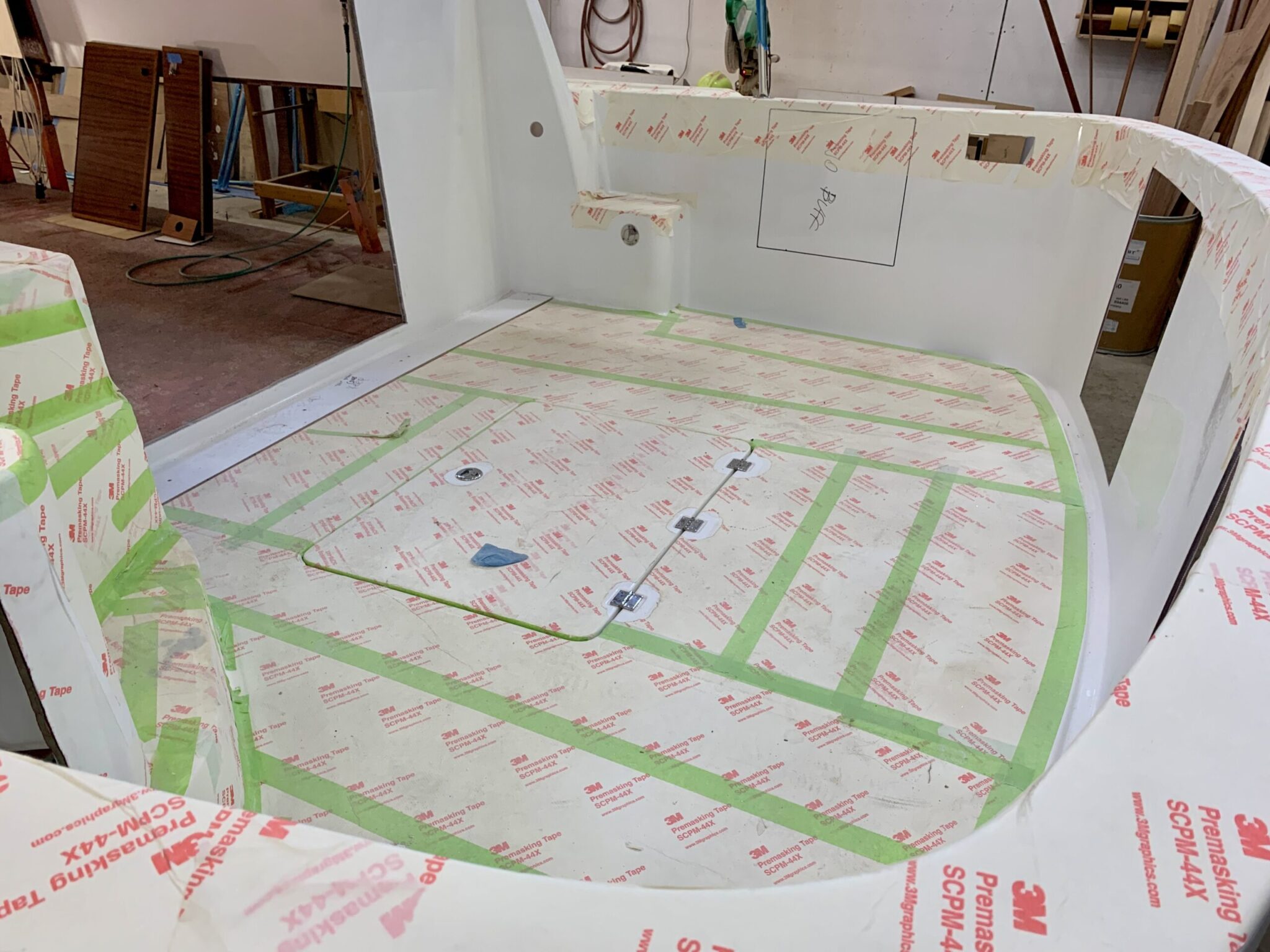
I’ll end with this construction detail.
I always figured that the layers of fiberglas in a boat were laid down as sheets of fiberglas matting. Maybe at some places that’s true, but not at Nordic Tugs. They apply a coat of resin then spray short lengths of fiberglas strands onto it. Because the strands wind up at all different orientations, there is no “grain” for cracks to follow. Because it starts as a liquid, it flows into and fills every corner and crevice.
The ragged edges on this part will be trimmed away.
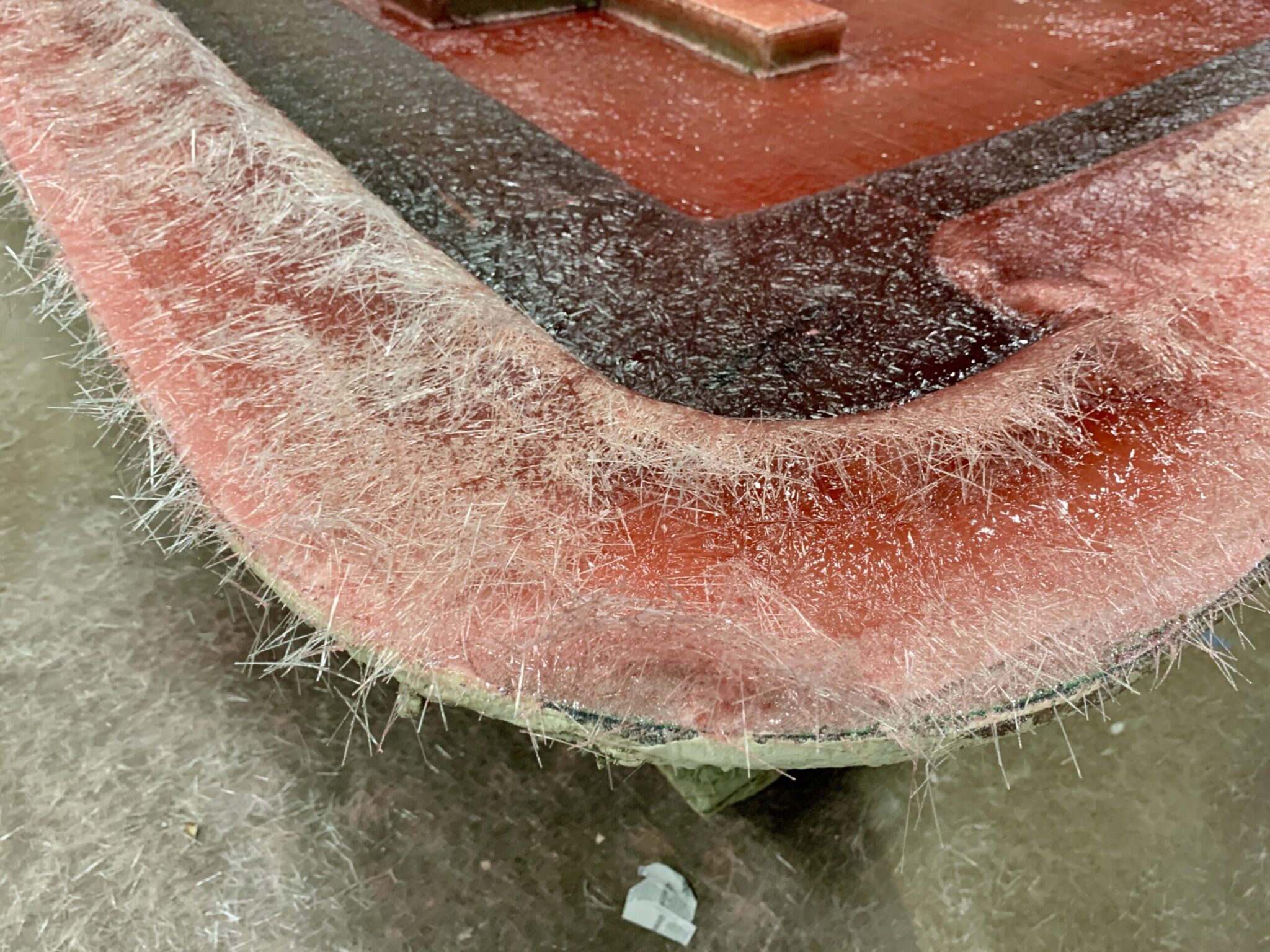
So, that’s it for now. Mary Anne and I are off to Barcelona-Granada-Seville in three days and plan to return two weeks later. More on Étude anon. But probably some Spanish postings first.
Hasta la vista.
Next: Étude – Making Water